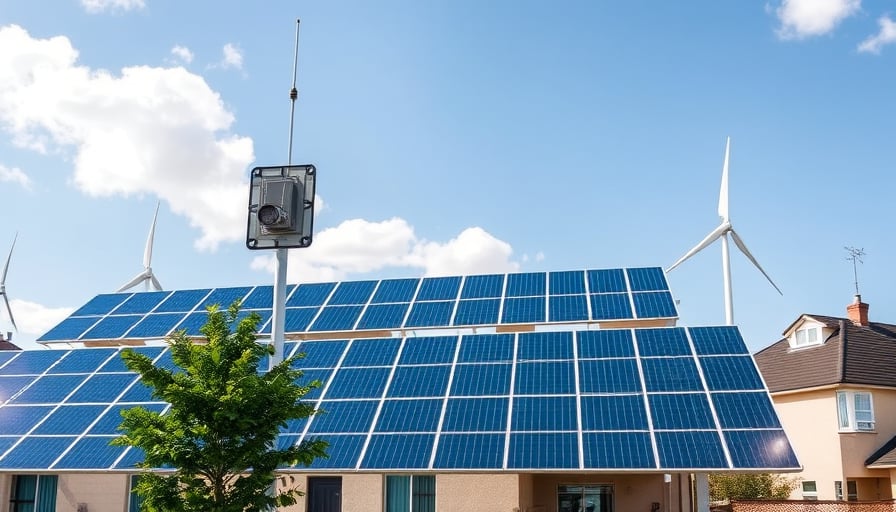Endesa SA Reports Strong Profit Growth Amidst Energy Transition Challenges
Endesa SA, the Madrid‑based utility, announced that its net profit for the first nine months of 2025 rose 22 % year‑over‑year, reflecting robust performance across generation and commercialization portfolios and a favourable tax environment following the reduction of the temporary energy tax. The company’s EBITDA increased 8.8 % during the same period, underscoring a solid operating margin even as net debt climbed 11.1 %.
Generation and Commercialization Dynamics
The profit uptick is largely attributed to efficiency gains in thermal and renewable generation assets. Endesa’s integrated power plants—comprising gas‑fired combined cycle units and expanding photovoltaic and wind farms—have achieved higher capacity factors, partly due to improved scheduling algorithms that balance unit commitment against fluctuating renewable output. The company’s commercial strategy, centered on long‑term power purchase agreements (PPAs) and spot market participation, has capitalized on the volatility of wholesale prices, generating a premium margin that offsets the lower marginal cost of renewables.
Grid Stability and the April Power Outage
Despite the financial gains, Endesa faces significant operational hurdles. The April 2025 grid outage, which exposed vulnerabilities in Spain’s high‑voltage network, prompted a costly re‑organisation of the electricity system. Management estimates a €150 million negative impact in 2025 attributable to this re‑organisation.
From an engineering perspective, the outage highlighted transmission congestion and insufficient grid inertia in the Iberian system. The event forced the utility to deploy additional synchronous condensers and invest in FACTS (Flexible AC Transmission System) devices to enhance dynamic response. Moreover, the incident accelerated plans to upgrade voltage levels and integrate distributed energy resources (DERs), requiring new protection schemes and real‑time monitoring to preserve stability.
Renewable Integration Challenges
The rapid expansion of wind and solar capacity in Spain has amplified the need for grid flexibility and ancillary services. Endesa’s grid operators employ advanced forecasting tools—such as machine‑learning models for PV output and probabilistic wind speed prediction—to anticipate variability and pre‑emptively dispatch peaking units. However, the variability of renewables increases the frequency of voltage excursions and places a premium on energy storage systems (ESS) and demand response programs. The company is currently evaluating utility‑scale battery storage and hybrid pumped‑hydro installations to smooth supply, reduce curtailment, and provide grid services that traditionally were delivered by conventional thermal plants.
Infrastructure Investment Requirements
To support the evolving power system, Endesa has outlined a multi‑year investment program focused on:
| Asset | Investment Scope | Estimated Cost (2026‑2029) |
|---|---|---|
| Transmission Upgrades (220 kV/400 kV) | Reinforcement and new line construction | €1.8 billion |
| Grid Automation & SCADA | Advanced protection and real‑time monitoring | €450 million |
| Energy Storage | 1 GWh of battery storage + 500 MW pumped‑hydro | €1.2 billion |
| Distributed Energy Integration | Smart meters & DER aggregators | €300 million |
These investments are critical to maintaining transmission reliability, meeting European Union grid codes, and facilitating the low‑carbon transition.
Regulatory Framework and Rate Structures
Spain’s regulatory environment, governed by the Comisión Nacional de los Mercados y la Competencia (CNMC) and the Ministry of Energy, sets tariff caps and incentive mechanisms that influence Endesa’s revenue streams. The energy price cap implemented in 2022 limits consumer rates to a predetermined level, which in turn forces utilities to optimize operations and reduce transmission losses. Moreover, the Renewable Energy Obligation (OPE) requires utilities to procure a mandated share of renewable generation, driving further investment in green assets.
The recent temporary energy tax reduction, which contributed to the 2025 profit surge, has been replaced by a per‑kWh surcharge on high‑consumption sectors. Endesa’s strategy includes energy efficiency programs for industrial customers, aimed at reducing peak demand and thereby mitigating the cost burden of the surcharge.
Economic Implications for Consumers
The interplay of increased capital expenditure and regulatory constraints translates into price dynamics for end‑users. While the reduction in the temporary tax offered short‑term relief, the necessity to finance grid upgrades and storage is expected to lead to incremental rate hikes in the mid‑term. According to CNMC projections, residential tariffs may rise by 3–4 % by 2028 to cover investment costs, offset by smart billing that rewards reduced consumption during peak periods.
Conversely, the integration of renewables and ESS is projected to lower wholesale power costs over the next decade, potentially moderating consumer price growth. Endesa’s policy of pre‑purchasing renewable power and participating in capacity markets positions it to shield customers from price volatility while advancing Spain’s climate targets.
Outlook
CEO José Bogas remains optimistic, citing sufficient balance‑sheet margins to pursue acquisitions and capitalize on emerging opportunities, especially in grid‑related services and green financing. Endesa’s forward‑looking investment plan, coupled with its robust generation portfolio, suggests a resilient position in Spain’s evolving energy landscape.
By addressing grid stability, renewable integration, and regulatory compliance through targeted infrastructure investments and operational efficiencies, Endesa aims to sustain profitability while supporting Spain’s transition to a low‑carbon, reliable power system.
